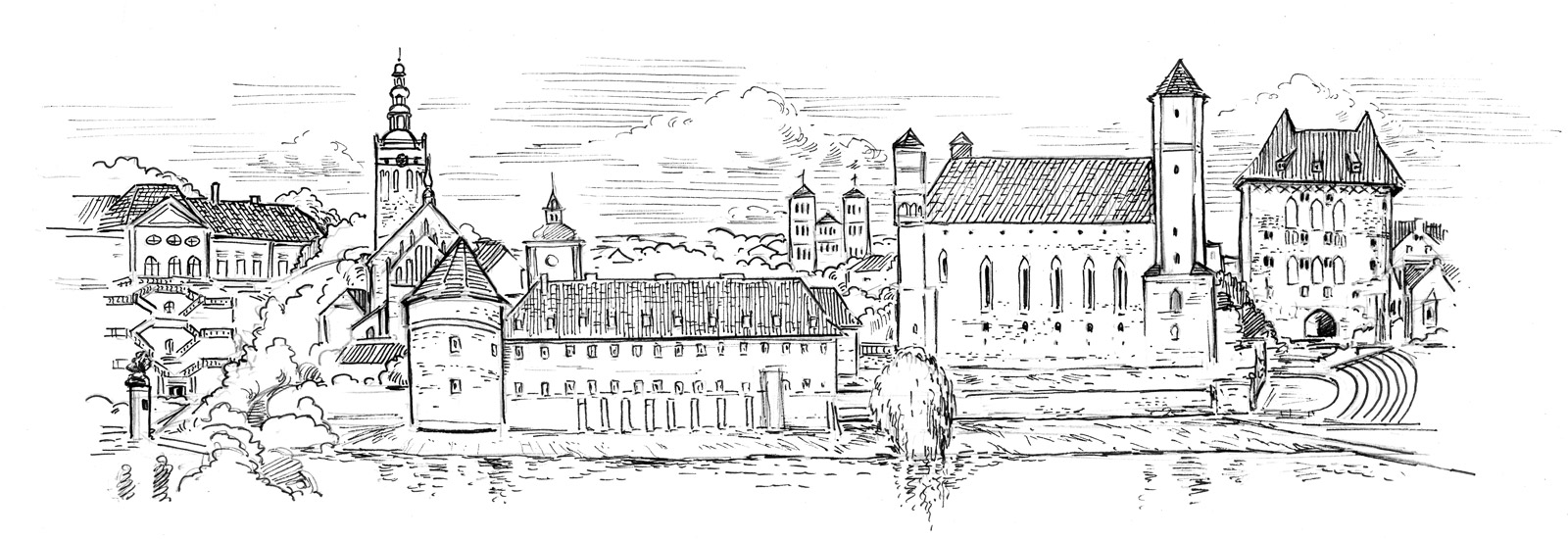Lidzbark Warmiński
Copernicus first came to his uncle’s, bishop Łukasz Watzenrode’s , Lidzbark court at the turn of 1495 and 1496, in connection with an attempt to take the function of the canon of Warmia. In 1503 he came to Warmia to permanently settle in this town and lived in the Lidzbark castle until 1510, acting as the personal secretary and doctor of the bishop.
Copernicus accompanied his uncle during conventions of Prussia, Polish-Teutonic negotiations and other political events, improving his diplomatic talents. At the same time, he also conducted astronomical research, developing an outline of the heliocentric theory, which he included in the so-called "Commentariolus."
In gratitude for the blessings and positive experiences, he dedicated his first print work to his uncle, which was the translation from Greek into Latin of the volume of letters of the Byzantine writer Teofilakt Symokatta. After moving to Frombork, the astronomer visited the episcopal capital many times.
Lidzbark Warmiński has been a town since 1308, and in the years 1350-1795 it was the capital of Warmia. The Gothic castle, in which bishops worked has survived. Other Gothic monuments of the town are: St. Peter and Paul the Apostles Collegiate Church with the monastery and the High Gate. Later buildings include: the classicist Krasicki Orangery (beginning of the 18th century), which today is a cultural center [http://oranzeria.lidzbarkw.pl/], the churches of the Exaltation of the Cross (end of the 18th century) and Protestant ( early 19th century, now the Orthodox church), town hall (19th century).
The castle of Lidzbark was erected in the years 1350-1355 at the mouth of the Symsarna River at the point where it flows into Łyna. From the end of the 16th century, the fortress lost its defensive character, transforming into an impressive bishop's court. The four-winged building survived the war. Its courtyard is surrounded by impressive cloisters, from which it got the name The Wawel of the North. The Great Refectory and the chapel made in a rococo style make a great impression. Today, in the halls of the castle there is the Warmian Museum [http://lidzbark.muzeum.olsztyn.pl/], a branch of the Museum of Warmia and Mazury. The exhibition of the museum is dedicated to the outstanding castle inhabitants, mainly to Ignacy Krasicki and other bishops (but also to Nicolaus Copernicus).
When it comes to recreation in Lidzbark Warmiński there are the famous Warmia Hot Springs [http://www.termywarminskie.pl/pl/], offering guests a wide range of water attractions and other services. In summer, kayaking trips on the Łyna and Symsarna River are very popular.
